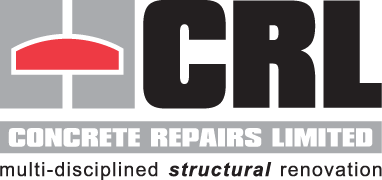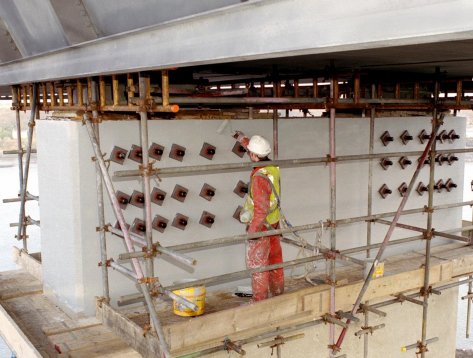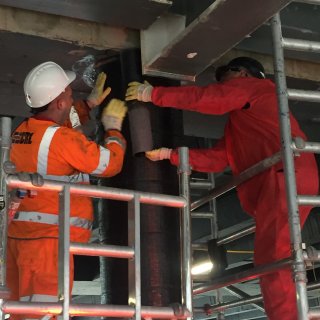Strengthening works required to avoid large detours
The Cleddau Bridge (originally called the Milford Haven Bridge) carries the A477 Road over the River Cleddau between Neyland and Pembroke Dock in South Wales, and is supported by 5 piers that are founded in the River.
Major strengthening works were undertaken to the pier heads of the bridge. These included strengthening works to the pier bents incorporating CFRP wrap and anchors that were fitted and stressed into cored holes and then grouted up. Access to the Bridge was achieved using the underslung Bridge crane that provided access to the scaffolds erected around each Pier Head.
The only way to access the bridge was using the mobile underslung bridge gantry that travelled along the length of the 800m bridge.
Initially scaffolds needed to be constructed around the pier heads that were accessed from the gantry. With access in place preparation works to the pier by water jetting were carried out. Survey works were undertaken to check for any delamination’s and to agree the positions for coring for the anchors.
The strengthening consisted of CFRP Wrap around the pier heads and then anchors fitted into cored holes. Following preparation works the substrate was checked using a hydra-jaws pull-off metre. Minor repairs were mand good with epoxy mortar. Then the Sikawrap was applied to the bridge piers to a design completed for CRL by Tony Gee Associates. This design indicated 3 levels of a 600mm wrap. Depending upon the height of the pier determined the number of layers of wrap applied with this varying between 4 and 12 layers. The Sikawrap was applied by roller into the Sikadur epoxy resin. Conditions needed to be carefully checked and high winds on the bridge was a constant issue with the works.
When all layers of the wrap had been applied the CFRP was then coated with a Sika coating to prevent degradation from UV light.
Holes were then cored through the pier heads with the wastewater being controlled by the protection on the scaffold. Anchors were then fitted into the holes and stressed up. Grout was then injected into annulus around the coreholes.
The works also involved the installation of a new portacabin for the future maintenance of the bridge.

"The strengthening works carried out on the bridge were truly innovative and this was recognised by the project being awarded an ICE Award"
Steve Jones | Southern Regional Director | CRL














